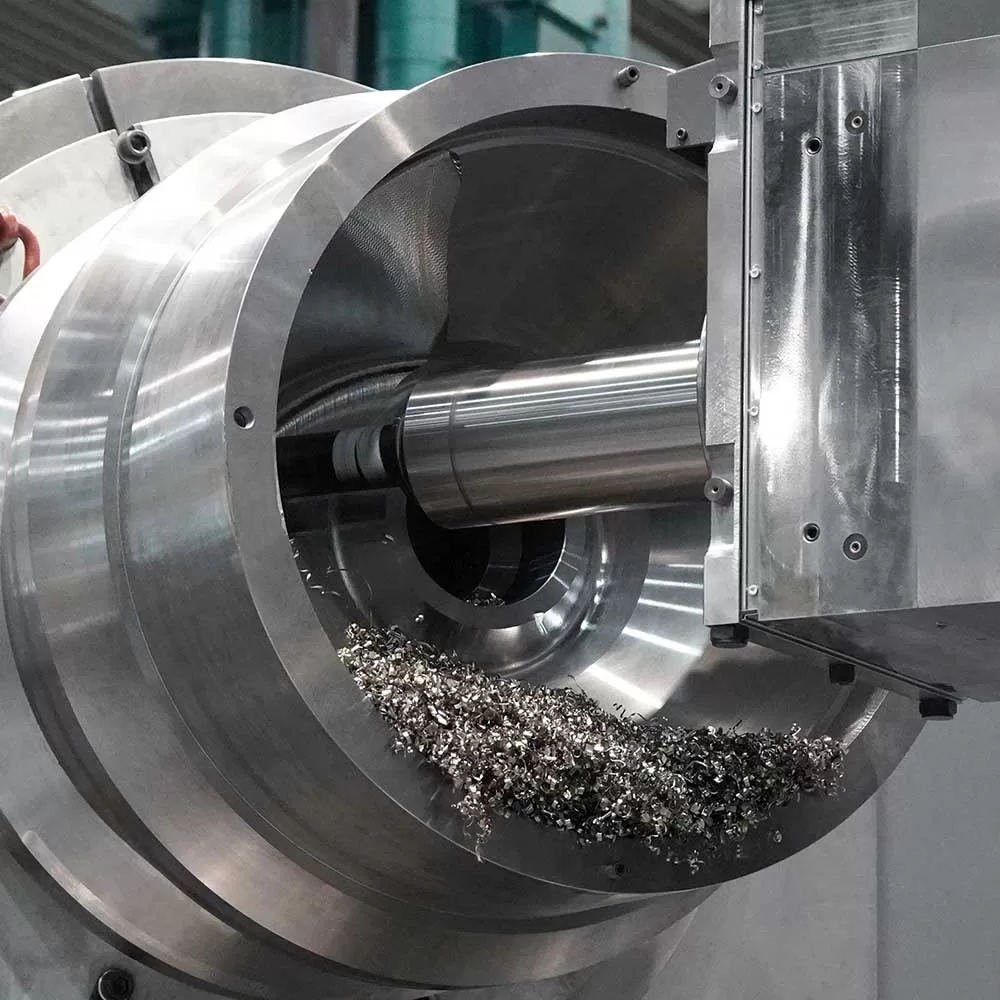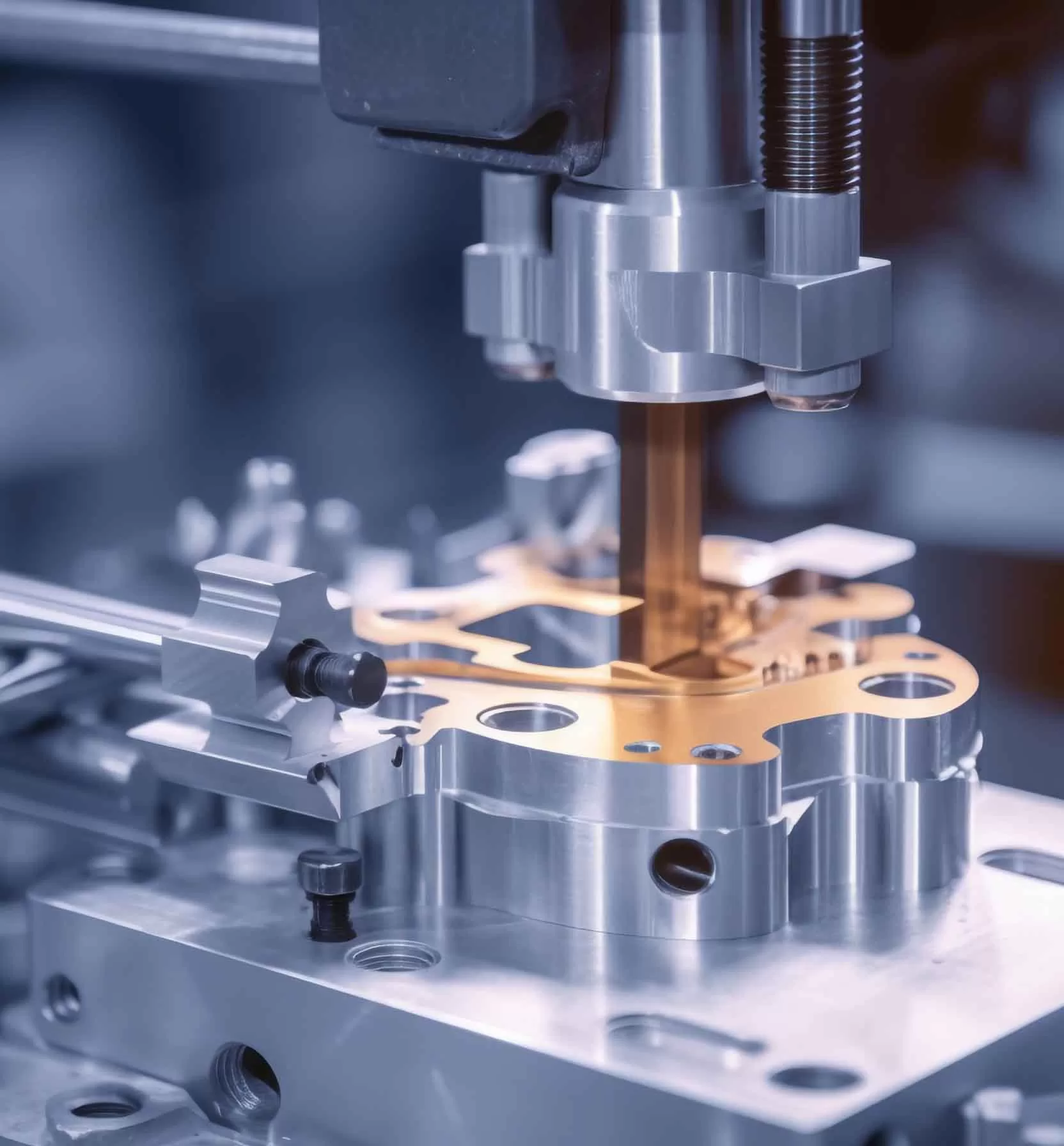Due to the complexity of CNC machining (such as different machine tools, different materials, different tools, different cutting methods, different parameter settings, etc.), it is determined from engaging in CNC machining (whether machining or programming) to reaching a certain level. It must go through a relatively long period of time. This manual is a summary of the CNC experience of engineers in the long-term actual production process, related to CNC machining technology, procedures, selection of common tool parameters, and monitoring during machining. For reference.
How to divide the Machining procedure?
- The tool concentration and sequencing method is to divide the process according to the tool used, and use the same tool to process all the parts that can be completed on the part. In other parts that they can finish with the second knife and the third. In this way, the number of tool changes can be reduced, the idle time can be compressed, and unnecessary positioning errors can be reduced.
- For parts with a lot of processing content, the processing parts can be divided into several parts according to their structural characteristics, such as inner shape, outer shape, curved surface or plane. Generally, the plane and positioning surface are processed first, and then the holes are processed; the simple geometric shapes are processed first, and then the complex geometric shapes are processed; the parts with lower precision are processed first, and then the parts with higher precision requirements are processed.
- With the rough and finish machining sequence method, for the parts that are prone to machining deformation, it is necessary to correct the shape due to the possible deformation after rough machining. Therefore, generally speaking, the processes for rough and finish machining must be separated.
To sum up, when dividing the process, it must be flexibly controlled according to the structure and manufacturability of the parts, the function of the machine tool, the amount of CNC machining content of the parts, the number of installations and the production organization status of the unit. In addition, it is recommended to adopt the principle of process concentration or the principle of process dispersion, which should be determined according to the actual situation, but must strive to be reasonable.
What principles should be followed in the arrangement of processing sequence?
The arrangement of the processing sequence should be considered according to the structure of the part and the condition of the blank, as well as the need for positioning and clamping. The key point is that the rigidity of the workpiece is not damaged. The sequence should generally be carried out according to the following principles:
- The processing of the previous process cannot affect the positioning and clamping of the next process, and the processing process of general machine tools interspersed in the middle should also be considered comprehensively.
- The internal shape and cavity processing process is carried out first, and then the shape processing process is carried out.
- The same positioning, clamping method or the same tool processing process is best connected to reduce the number of repeated positioning, the number of tool changes and the number of moving the pressure plate.
- For multiple processes in the same installation, the process with less rigid damage to the workpiece should be arranged first.
What aspects should be paid attention to when determining the workpiece clamping method?
- Strive to unify the benchmarks of design, technology, and programming calculations.
- Minimize the number of clamping times, and try to process all the surfaces to be processed after one positioning.
- Avoid using manual adjustment schemes that occupy the machine.
- The fixture should be open, and its positioning and clamping mechanism cannot affect the tool movement during processing (such as collisions). When encountering such a situation, it can be clamped by using a vise or adding a bottom plate to extract screws.
How to determine the reasonableness of the tool setting point? What is the relationship between the workpiece coordinate system and the programming coordinate system?
The tool setting point can be set on the part to be processed, but note that the tool setting point must be the reference position or the part that has been finished. Sometimes the tool setting point is damaged after the first process, which will cause the second process and There is no way to find the subsequent tool setting points, so when setting the tool in the first process, pay attention to setting up a relative tool setting position at a place that has a relatively fixed size relationship with the positioning reference, so that the original position can be retrieved according to their relative positional relationship. Calibration point. This relative tool setting position is usually set on the machine tool table or fixture. The selection principles are as follows:
- Easy to find.
- Easy to program.
- The tool setting error is small.
- It is convenient to check during processing.
The origin position of the workpiece coordinate system is set by the operator. It is determined by tool setting after the workpiece is clamped. It reflects the distance position relationship between the workpiece and the zero point of the machine tool. Once the workpiece coordinate system is fixed, it generally does not change. The workpiece coordinate system and the programming coordinate system must be unified, that is, the workpiece coordinate system and the programming coordinate system are consistent during processing.
How to choose the knife route?
The tool path refers to the movement track and direction of the tool relative to the workpiece during NC machining. Reasonable selection of processing route is very important, because it is closely related to the processing accuracy and surface quality of parts. When determining the cutting route, the following points are mainly considered:
- Guarantee the processing accuracy requirements of parts.
- It is convenient for numerical calculation and reduces programming workload.
- Seek the shortest processing route, reduce empty tool time to improve processing efficiency.
- Minimize the number of program segments.
- To ensure the roughness requirements of the workpiece contour surface after machining, the final contour should be processed continuously in the last pass.
- The route of the tool’s advance and retreat (cut-in and cut-out) should also be carefully considered to minimize tool marks left by stopping the tool at the contour (sudden change of cutting force causes elastic deformation), and avoid vertically falling on the contour surface. The knife scratches the workpiece.
How to monitor and adjust during processing?
After the workpiece is aligned and the program debugging is completed, it can enter the automatic processing stage. In the process of automatic processing, the operator should monitor the cutting process to prevent workpiece quality problems and other accidents caused by abnormal cutting.
The monitoring of the cutting process mainly considers the following aspects:
The main consideration of machining process monitoring rough machining is the rapid removal of excess allowance on the surface of the workpiece. During the automatic processing of the machine tool, according to the set cutting amount, the tool automatically cuts according to the predetermined cutting trajectory. At this time, the operator should pay attention to observe the change of cutting load in the process of automatic processing through the cutting load table, and adjust the cutting amount according to the bearing force of the tool to maximize the efficiency of the machine tool.
Monitoring of cutting sound during cutting In the automatic cutting process, when cutting is generally started, the sound of the tool cutting the workpiece is stable, continuous, and brisk, and the movement of the machine tool is stable at this time. With the progress of the cutting process, when there are hard spots on the workpiece or the tool wears or the tool is clamped, the cutting process becomes unstable. The unstable performance is that the cutting sound changes, and the tool and the workpiece will collide with each other. sound, the machine tool will vibrate. At this time, the cutting amount and cutting conditions should be adjusted in time. When the adjustment effect is not obvious, the machine tool should be suspended to check the condition of the tool and the workpiece.
Finishing process monitoring Finishing is mainly to ensure the processing size and surface quality of the workpiece, the cutting speed is high, and the feed rate is large. At this time, attention should be paid to the influence of built-up edge on the processing surface. For cavity processing, attention should also be paid to overcutting and tool clearance at the corners. To solve the above problems, one is to pay attention to adjust the spraying position of the cutting fluid, so that the machined surface is always in the best cooling condition; the other is to pay attention to the quality of the machined surface of the workpiece, and avoid cutting as much as possible by adjusting the cutting amount. change in quality. If the adjustment still has no obvious effect, stop the machine and check whether the original program is reasonable.
Special attention should be paid to the position of the tool during suspension inspection or shutdown inspection. If the tool stops during the cutting process, the sudden spindle stop will cause tool marks on the surface of the workpiece. Generally, stop should be considered when the tool leaves the cutting state.
Tool monitoring The quality of the tool largely determines the machining quality of the workpiece. In the process of automatic machining and cutting, it is necessary to judge the normal wear status and abnormal damage status of the tool through sound monitoring, cutting time control, pause inspection during cutting, and workpiece surface analysis. According to the processing requirements, the tools should be processed in time to prevent processing quality problems caused by the tools not being processed in time.
How to choose the processing tool reasonably? How many factors are there in the cutting amount? How many materials are there for knives? How to determine the rotation speed, cutting speed and cutting width of the tool?
For face milling, non-regrinding carbide end mills or end mills should be used. In general milling, try to use the second pass for processing. It is best to use the end mill for rough milling in the first pass, and move continuously along the surface of the workpiece. The width of each pass is recommended to be 60%–75% of the tool diameter. End mills and end mills with carbide inserts are mainly used for machining bosses, grooves and box faces. Ball knives and round knives (also known as round nose knives) are often used to process curved surfaces and beveled contours. The ball cutter is mostly used for semi-finishing and finishing. Round knives inlaid with carbide tools are mostly used for roughing. There are three major elements in the cutting amount: depth of cut, spindle speed and feed rate. The general principle for the selection of cutting amount is: less cutting, fast feed (that is, small cutting depth and fast feed speed). Classified by material, knives are generally divided into ordinary hard white steel knives (the material is high-speed steel), coated knives (such as titanium plating, etc.), alloy knives (such as tungsten steel, boron nitride knives, etc.).
What is the function of the processing procedure sheet? What should be included in the processing procedure sheet?
The machining program sheet is one of the contents of the NC machining process design, and it is also a procedure that needs to be followed and executed by the operator. It is a specific description of the machining program. The selected tool should pay attention to the problems and so on.
In the processing program list, it should include: drawing and programming file name, workpiece name, clamping sketch, program name, tool used in each program, maximum depth of cutting, processing nature (such as roughing or finishing), theory processing time etc.
How to prepare before CNC programming?
After determining the processing technology, you need to know before programming: 1. The clamping method of the workpiece; 2. The size of the workpiece blank—-in order to determine the range of processing or whether multiple clamping is required; 3. The material of the workpiece— -In order to choose which tool to use for processing; 4. What are the tools in stock? Avoid modifying the program because there is no such tool during processing. If you must use this tool, you can prepare it in advance.
What are the principles for setting the safe height in programming?
The principle of setting the safe height: generally higher than the highest surface of the island. Or set the programming zero point at the highest surface, which can also avoid the danger of knife collision to the greatest extent.
After the toolpath is compiled, why do we need to post-process it?
Because different machine tools can recognize different address codes and NC program formats, it is necessary to select the correct post-processing format for the machine tool used to ensure that the compiled program can run.
What is DNC Communications?
The method of program transmission can be divided into CNC and DNC. CNC means that the program is transmitted to the memory of the machine tool through media media (such as floppy disk, tape reader, communication line, etc.) processing. Since the capacity of the memory is limited by the size, the DNC method can be used for processing when the program is large. Since the machine tool directly reads the program from the control computer during DNC processing (that is, it is done while feeding), it is not affected by the capacity of the memory. Limited by size.


